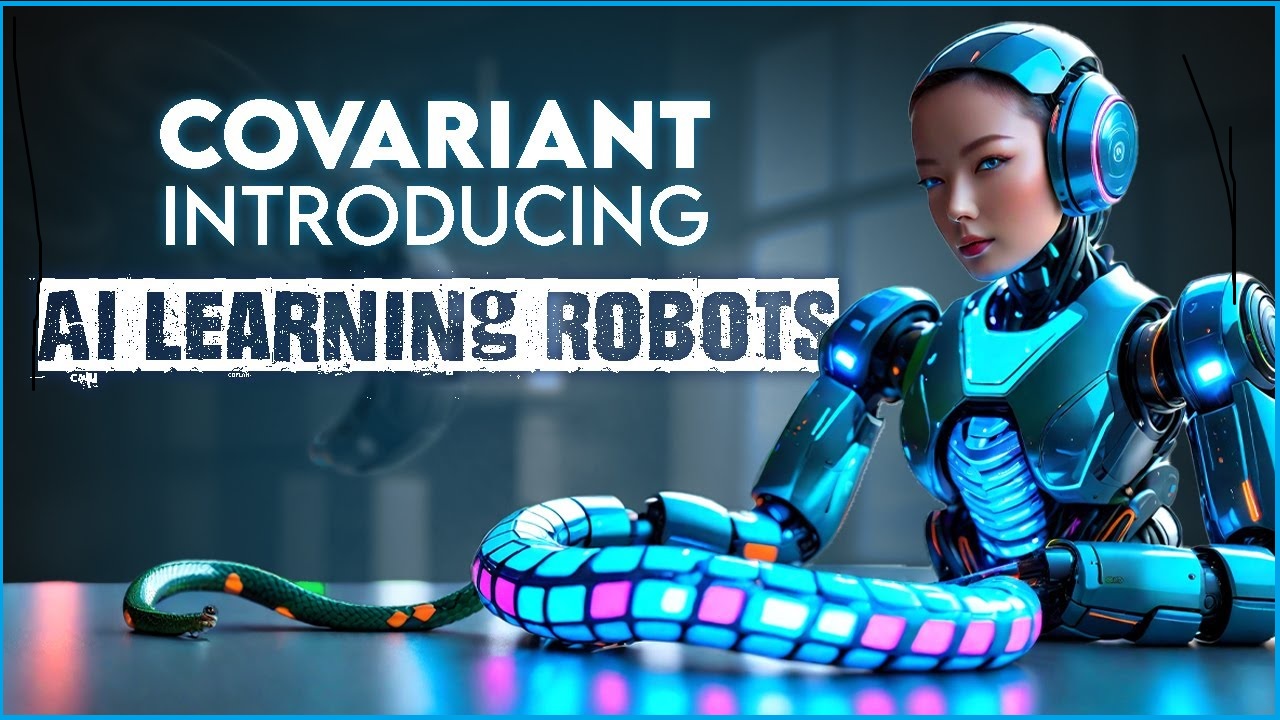Human collaborative robots: Robots Now Learning on Their Own Like Humans – Ex-OpenAI
So, Covariant, an innovative company in the field of robotics, is using the advanced AI that powers digital tools like ChatGPT to create robots that can operate in the physical environment. They want to use this technology to make robots that can work and learn in the real world, not just online. Founded by three former researchers from OpenAI, Covariant is making strides in the robotics industry by developing software that enables robots to learn and adapt through observation and interaction with their surroundings, much like how chatbots learn from vast repositories of textual data.
Situated in Emeryville, California, Covariant focuses on enhancing the capabilities of robots used in warehouses and distribution centers. The essence of their technology lies in providing robots with an understanding of their environment, allowing them to perform tasks such as picking up, moving, and sorting items with an unprecedented level of sophistication. These robots, equipped with the ability to comprehend English, offer the possibility of human-like interaction, enabling operators to communicate with them as if they were conversing with a chatbot like ChatGPT.
At the heart of Covariant’s innovation is the integration of sensory data from cameras and other sensors with the extensive textual data similar to that used to train chatbots. This combination grants the robots a comprehensive understanding of their surroundings, empowering them to handle objects and situations they have not been explicitly programmed to deal with. For instance, a Covariant robot can identify and manipulate a banana by understanding instructions given in English, even if it has never encountered a banana before.
Challenges and the Road Ahead for Covariant’s AI-powered Robots
This capability is a significant departure from traditional robotics, where machines perform a limited set of tasks in a highly controlled environment. Despite the promising advancements, Covariant’s technology is not infallible. The robots occasionally make errors, such as misunderstanding instructions or dropping objects.
These shortcomings highlight the challenges inherent in applying AI to physical tasks, where the complexity of the real world introduces variables that are difficult to anticipate and manage. Nonetheless, Covariant’s work represents a critical step forward in the quest to create more intelligent, adaptable robots capable of operating in diverse environments, from warehouses to manufacturing plants and potentially even in autonomous vehicles. The foundation of Covariant’s technology is built on neural networks, a form of AI inspired by the human brain’s structure.
These networks learn to recognize patterns and make decisions based on the analysis of large datasets. This learning process is similar to the development of digital AI applications, such as chatbots and image generators, which understand or create content by digesting vast amounts of information from the Internet. By applying these principles to robotics, Covariant is enabling machines to learn from both digital data and sensory input from the physical world, blurring the lines between the digital and physical realms.
Covariant: Revolutionizing Robotics with AI and Paving the Way for a More Automated Future
Covariant’s ambitious project is backed by substantial financial support, with $222 million in funding underscoring the industry’s confidence in their approach. The company’s focus on developing software rather than physical robots themselves allows for a versatile application of their technology across various sectors and types of robotic systems. This strategy aims to pave the way for broader adoption and innovation in the field of robotics, making robots more accessible and useful in a wide range of applications.
The potential impact of Covariant’s technology is vast, promising to transform how robots are deployed in numerous settings. By making robots more adaptable and capable of understanding and interacting with their environment in complex ways, Covariant is contributing to a future where machines can take on more sophisticated tasks, work alongside humans more effectively, and adapt to new challenges as they arise. This vision aligns with the broader trend of AI integration into our daily lives, where technology not only automates tasks, but also enhances human capabilities and experiences.
The Societal Impact of Covariant’s AI Robots: Reshaping Work, Ethics, and the Future
Covariant’s work also raises important questions about the future of work and the role of robots in society. As robots become more capable and versatile, they may assume responsibilities currently held by humans, leading to shifts in the labor market and necessitating discussions about retraining and education. Furthermore, the development of intelligent robots highlights ethical considerations, such as ensuring safety and managing the potential for AI systems to act in unpredictable ways.
Covariant’s efforts to bring AI technology from the digital world into the physical domain through robotics represents a significant leap forward in the field. By combining sensory data with the textual data used to train AI systems like ChatGPT, Covariant is enabling robots to understand and interact with their environment in ways that were previously unimaginable. Although challenges remain, the potential for this technology to revolutionize industries, enhance human-robot collaboration, and create new opportunities is immense.
Alright, don’t forget to hit that subscribe button for more updates. Thanks for tuning in, and we’ll catch you in the next one.
- Human collaborative robots: Robots Now Learning on Their Own Like Humans – Ex-OpenAI
- Human collaborative robots: Robots Now Learning on Their Own Like Humans – Ex-OpenAI
Also Read:-The Best Free AI Art Generators – RANKED Worst-Best (Most Are New to You)
